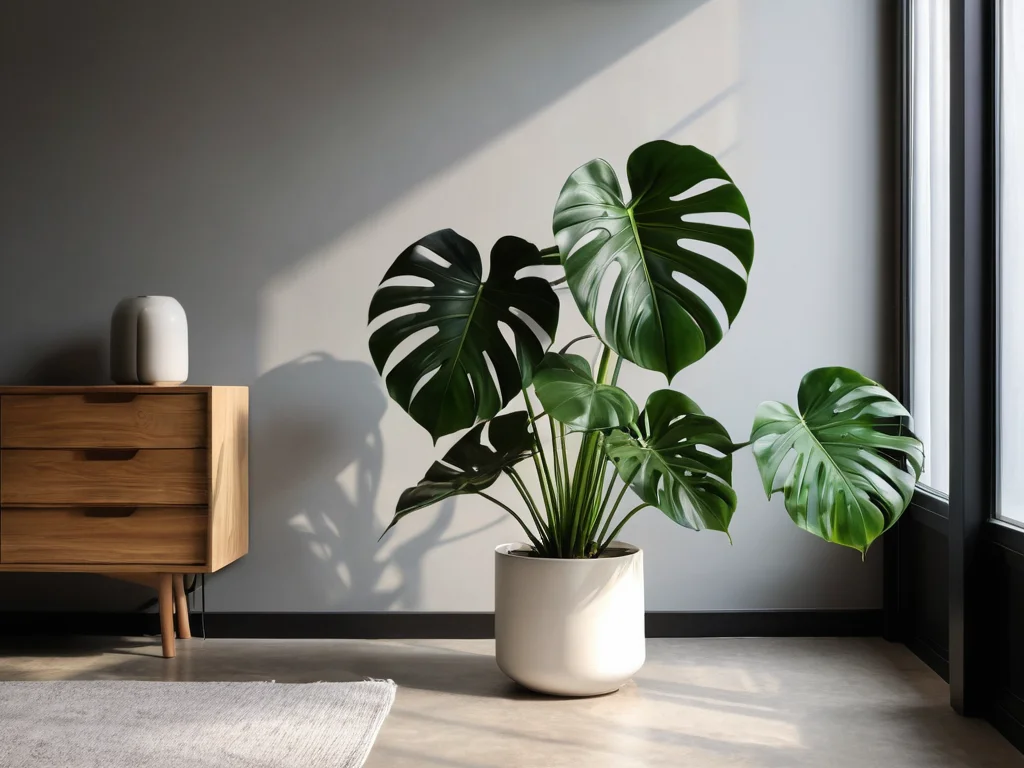In the world of modern interior design, the Monstera has become a true star. Its exotic, dissected leaves adorn the pages of glossy magazines, the profiles of popular bloggers, and, of course, our homes. This tropical giant attracts attention with its power and extraordinary beauty, promising to bring a touch of wild, pristine nature into the space. However, along with admiration, the Monstera often evokes caution. In certain circles, it has firmly earned a sinister nickname – an “energy vampire.” Is this a harmless myth, an urban legend, or a real hidden threat to your home harmony and well-being? Let’s delve into this issue together, using the ancient wisdom of Feng Shui to understand the true nature of this amazing vine.
The purpose of this article is not to scare you, but to provide comprehensive information based on Feng Shui principles. We will explore why the Monstera has gained such a controversial reputation, how its powerful energy manifests in the home, and, most importantly, how to befriend this plant, transforming it from a potential “vampire” into a loyal ally capable of attracting luck, abundance, and prosperity. After all, Feng Shui teaches us not to fear energy, but to understand and direct it for good.
The Majesty of the Monstera: Why This Tropical Giant Has Conquered Our Homes?
Before delving into the energetic aspects, let’s acknowledge the visual appeal of the Monstera, which has made it so sought after. This plant, native to the humid tropical forests of South and Central America, possesses a truly unique aesthetic. Its hallmark is its large, glossy leaves, which, as they mature, become covered with characteristic slits and holes, creating a unique, almost sculptural appearance. These natural “perforations” not only give the plant a graphic quality but are also an evolutionary adaptation that allows it to withstand heavy tropical rains and capture diffused light in the lower layers of the forest.
The Monstera fits perfectly into a wide variety of interior styles, from minimalism to boho and loft. It can become a striking accent, a central decorative element around which the entire room composition is built. Its dark green leaves bring a sense of freshness, life, and naturalness into the home, creating a kind of “urban jungle” that is so desired in city living. Furthermore, the Monstera is relatively unpretentious in its care, making it accessible even to novice plant enthusiasts. It grows quickly, demonstrating its vitality and dynamism, which in itself is a powerful energetic message.
In today’s world, where large, expressive plants are highly valued, the Monstera holds a leading position. Its impressive size and ability to fill space make it an ideal choice for spacious living rooms, lobbies, and offices. It doesn’t just decorate a room; it *transforms* it, giving the interior depth, character, and a certain exotic luxury. However, it is precisely this power and prominence of the plant, as we shall see, that have formed the basis for the myth of its “energetic predatory nature.”
The Myth of the “Energy Vampire”: Where Do the Roots Lie and What Do Experts Say?
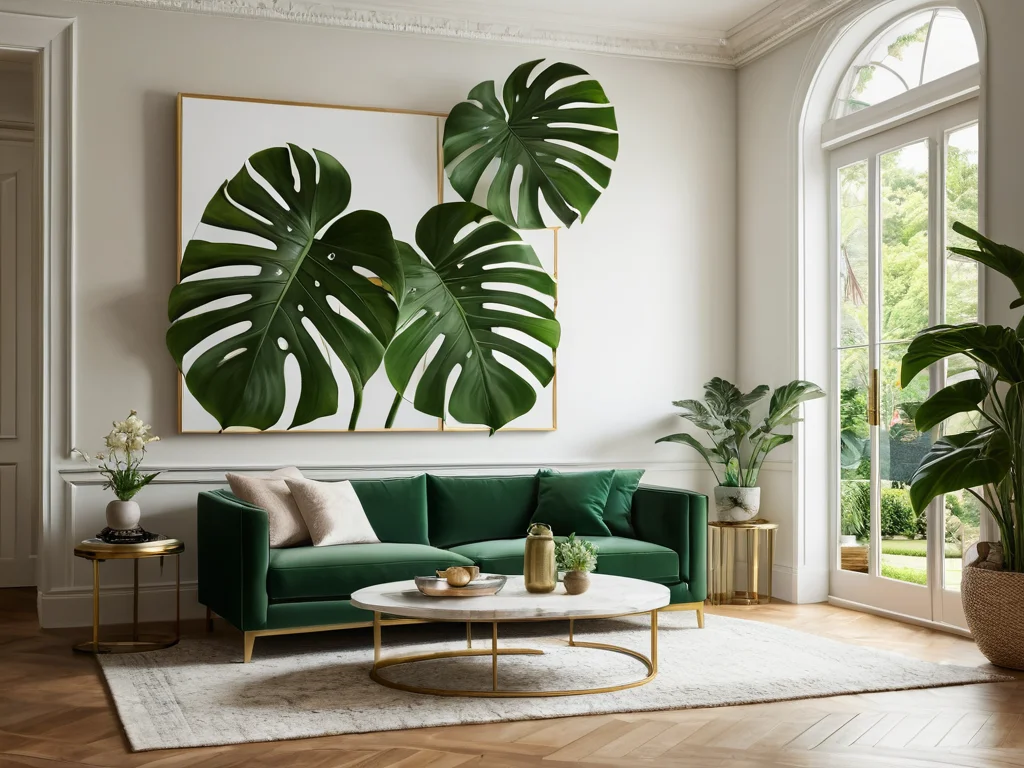
Now, let’s move on to the most intriguing part of our discussion – the Monstera’s reputation as an “energy vampire.” This idea is widespread and sparks much debate. It is believed that the Monstera can absorb life energy (Qi) from people nearby, causing weakness, fatigue, apathy, and even health problems. People often complain that after bringing a Monstera into their home, they started feeling less energetic, sleeping poorly, or getting sick more often.
Where do these beliefs come from? Several main reasons can be identified that may have contributed to the formation of this image:
- Impressive Size and Rapid Growth: The Monstera is a large, fast-growing plant. Visually, it takes up a lot of space and grows actively, which can create the impression of “absorbing” space and, consequently, energy. Its powerful root system and long aerial roots that the plant extends can be associated with something that “pulls” or “sucks” resources.
- The Name “Monstera”: The very name of the plant, derived from the Latin *monstrum* (monster, monstrosity), may have played a role. Although this name was likely given due to its unusual, “monstrous” size and leaf shape, it subconsciously creates negative associations.
- Specificity of “Intense” Energy: Some folk beliefs associate large plants with active energy absorption. If a person living in the house is already weakened or energetically sensitive, they may feel the impact of the plant’s powerful energy more strongly, interpreting it as its “taking away.”
- Lack of Feng Shui Knowledge: Myths often arise from a superficial understanding of the principles of energetic interaction. Instead of figuring out how to correctly place a plant with strong energy, it is simply declared “harmful.”
It is important to note that from a scientific perspective, plants, on the contrary, improve air quality by absorbing carbon dioxide and releasing oxygen, which has a beneficial effect on human well-being. They can also humidify the air. Therefore, the “vampirism” of the Monstera is certainly not a physiological phenomenon, but rather an energetic or psycho-emotional one, which we will examine from the perspective of Feng Shui. Feng Shui experts approach this issue more subtly, explaining that there are no “bad” or “good” plants, only *incorrect placement* and *misunderstanding of their energetic nature*.
Feng Shui and Houseplants: General Principles of Interaction with Home Energy
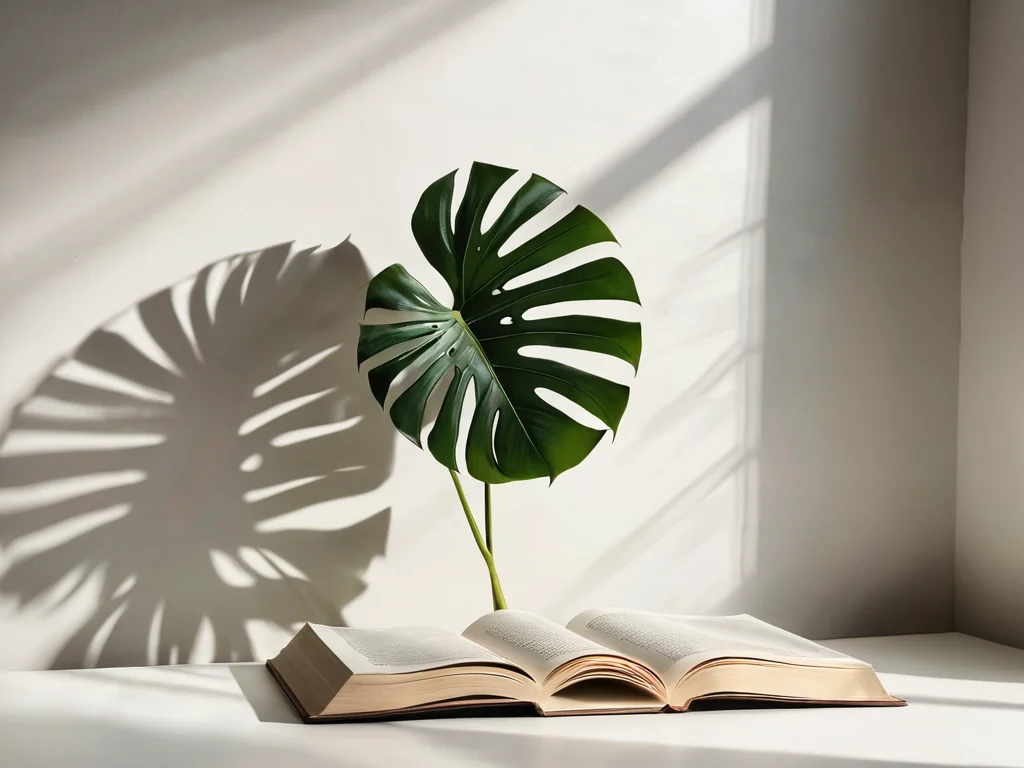
In Feng Shui, plants play an extremely important role, as they are living conductors and generators of life energy, Qi. They bring the Wood element into the home, which symbolizes growth, development, vitality, health, and abundance. However, like any powerful tool, plants require skillful handling.
General principles of interacting with home energy through houseplants include:
- Qi Generation: Healthy, lush plants actively generate positive, living Qi. They can revitalize stagnant corners, filling the space with freshness and movement. Wilting or sick plants, on the contrary, create stagnant, negative energy (Sha Qi), so they must be treated or removed promptly.
- Balance of Elements: Plants represent the Wood element. For harmony, it is important to maintain a balance of all five elements (Wood, Fire, Earth, Metal, Water) in the space. An excess of Wood can be as harmful as its deficiency.
- Leaf Shape: It is believed that plants with round, soft leaves bring a gentler, more calming energy. Plants with sharp, needle-like leaves or thorns can generate Sha Qi (aggressive energy), so they should be placed with caution, avoiding direct paths and resting places. The Monstera, with its large, yet still rounded and *perforated* leaves, occupies a special position here.
- Direction of Qi Flow: Plants can direct, slow down, or speed up energy flows. Tall plants can be used to “lift” energy upwards, while spreading plants distribute it sideways.
- Size Ratio: The size of the plant should be proportional to the size of the room. A huge plant in a small room can suppress energy, while a tiny one in a large hall may be unnoticeable and ineffective.
- Symbolism: Different plants carry their own symbolism (e.g., bamboo – luck, money tree – prosperity). Feng Shui also interprets the symbolism of the Monstera.
Thus, Feng Shui not only approves of having plants in the home but also dictates rules for their placement and care so that they bring maximum benefit, strengthening health, well-being, and overall harmony in your life. It is important to understand that the Monstera, possessing very strong energy, requires special attention and knowledge for proper placement.
The Energetics of the Monstera Through the Eyes of Feng Shui: Analyzing the Influence of Leaves, Shape, and Growth
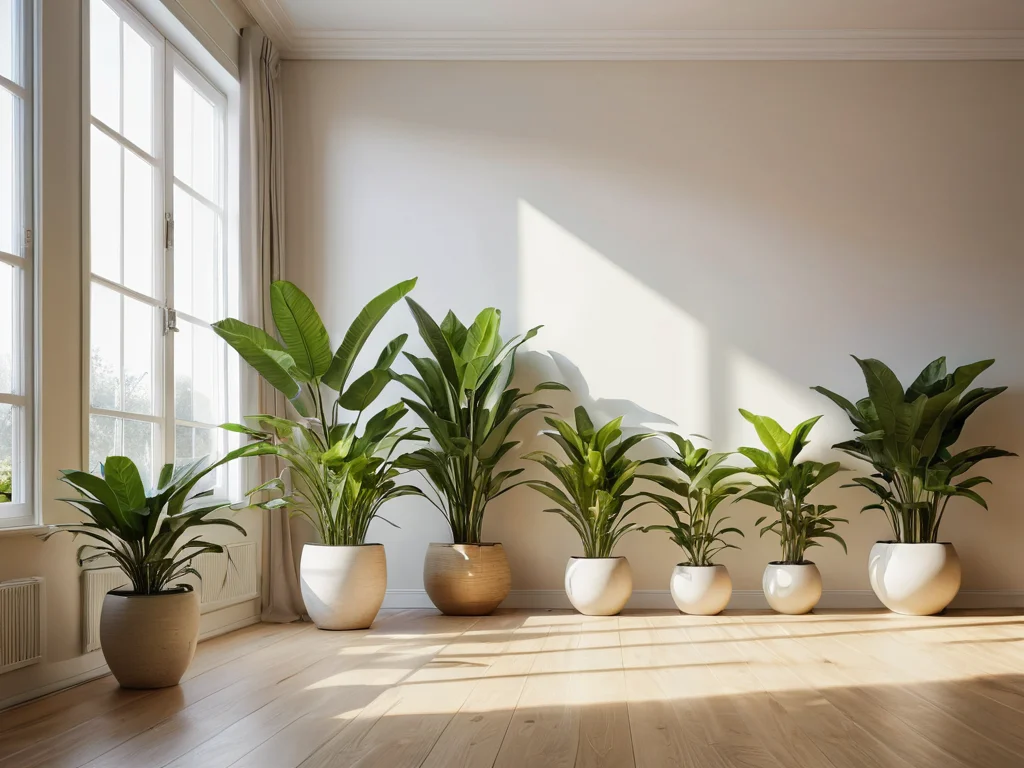
Let’s take a detailed look at how Feng Shui interprets the energetic characteristics of the Monstera, refuting or confirming the myth of its “vampirism.” Feng Shui’s view of this plant is much more complex and nuanced than simply categorizing it as “bad” or “good.”
- Leaves with Holes (Phenomenal Perforations): This is perhaps the most important feature of the Monstera from a Feng Shui perspective. Unlike plants with solid, intact leaves, the holes in Monstera leaves are considered very auspicious. They symbolize *openness*, *permeability*, and the *ability to let energy pass through*, rather than to retain or absorb it. These holes allow Qi to circulate freely, preventing stagnation and purifying the space. It is believed that such leaf structure helps to dissipate negative energies, transforming them into softer and more harmonious flows. This is the direct opposite of the “vampirism” idea, where energy is supposedly absorbed irretrievably. On the contrary, the Monstera with its perforated leaves can act as a natural energy filter.
- Leaf Size and Shape: The large, wide leaves of the Monstera symbolize *abundance*, *growth*, and *protection*. They are like broad palms, ready to receive and hold well-being. The rounded shape of the leaves, despite their segmentation, is considered softer and more harmonious compared to sharp, thorny plants that can generate Sha Qi. The Monstera radiates power and stability with its appearance, associated with the Wood element, which supports growth and development.
- Active Growth and Vitality: The Monstera is a plant with an incredible thirst for life. Its rapid and vigorous growth symbolizes *dynamism*, *progress*, and *unwavering forward movement*. In Feng Shui, this is associated with career advancement, business development, increased income, and general prosperity. Such energy is considered very Yang (active, masculine) and can be extremely useful for activating certain areas in the home responsible for wealth and success.
- Aerial Roots: These amazing roots, which the Monstera extends in search of support and moisture, also have their significance. They can symbolize *strengthening connections*, *stability*, and the *ability to adapt* to the environment. If the aerial roots are neatly guided or tied, they can create a sense of order and support, rather than chaos. However, if their growth is uncontrolled, they can be perceived as an aggressive intrusion into the space, creating a feeling of entanglement and energetic disorder.
Thus, from a Feng Shui perspective, the Monstera is not an “energy vampire” but rather an *energy generator and transformer*. Its powerful Yang energy, its ability to let Qi pass through its perforated leaves, and its symbolism of growth make it a potentially very auspicious plant. Problems only arise when its power is underestimated or ignored, and the plant is placed without considering its energetic characteristics. The main lesson: strong energy requires proper management, not complete avoidance.
How to Tame the “Vampire”: Secrets of Harmonious Coexistence with the Monstera According to Feng Shui

As we have already established, the Monstera is not a villain, but rather a powerful ally whose energy requires respect and proper direction. If you want the Monstera to bring well-being and prosperity into your home, rather than causing anxiety, follow these Feng Shui recommendations:
- Correct Placement: This is the most important aspect. The Monstera, as a plant with strong Yang energy, is most auspicious in the following Bagua sectors:
- Southeast (Wealth Area): This sector is governed by the Wood element. The Monstera, being a representative of Wood and symbolizing growth and development, is ideal for activating this area. It can contribute to attracting financial well-being and increasing income.
- East (Family and Health Area): Also belongs to the Wood element. Placing a Monstera here can strengthen family ties, promote the growth and well-being of all family members, and support good health.
- Entrance Area or Hallway: If you have a spacious hallway, the Monstera can be an excellent choice. It creates a powerful, welcoming impression, greeting guests and directing incoming Qi into the home. However, avoid placing it directly opposite the entrance door to avoid blocking the flow. It’s better to place it slightly to the side.
- Spacious Living Room: This is an ideal place where its energy can spread freely without creating a feeling of overload. The Monstera can become a beautiful focal point, activating social life and the overall energy flow in the home.
- Control Size and Shape: Do not allow the Monstera to grow uncontrollably. Regular pruning will not only maintain its aesthetic appearance but also help manage its energy. Gently tie up aerial roots, directing them upwards or along a support. This symbolizes controlled growth and order, rather than chaotic spread.
- Provide Support: In nature, the Monstera is a vine and needs support. Indoors, use a moss pole or other stable support. This symbolizes support, stability, and the striving for growth, helping the plant direct its powerful energy upwards, towards prosperity.
- Healthy Plant Condition: A sick, wilting plant attracts negative energy. Regularly inspect your Monstera, removing dry or yellowed leaves. Care for it with love and attention, providing sufficient light, water, and nutrients. A healthy, lush plant is the key to positive Qi in your home.
- Balance with Other Elements: If the Monstera’s energy seems too dominant, you can balance it. For example, you can place items related to the Earth element (ceramics, stones) nearby to ground its energy, or to the Water element (a small fountain, blue or black decorative elements) to enhance the flow of prosperity.
- Space Around the Plant: Ensure sufficient free space around the Monstera. It should not obstruct passages, doors, or windows. Free circulation of air and light around the plant promotes harmonious distribution of its energy.
By following these recommendations, you can not only enjoy the beauty of the Monstera but also use its powerful energy to attract positive changes into your life. It will become not a “vampire” but a strong source of vitality and well-being.
Where the Monstera Doesn’t Belong: Common Mistakes and Forbidden Zones in Feng Shui
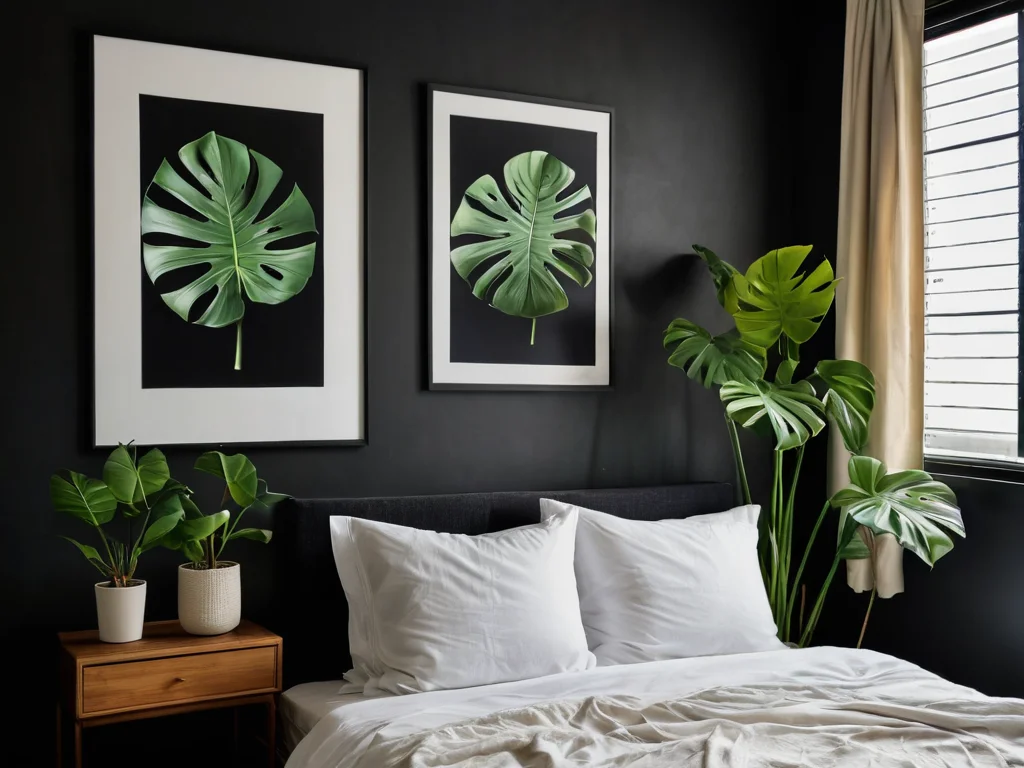
Despite all its potential benefits, there are places in the home where the Monstera, with its powerful energy, can be counterproductive and even cause imbalance. Placing the Monstera in “forbidden” zones is one of the most common mistakes leading to the myth of its “energy vampirism.” Let’s look at where exactly you should not place this tropical giant:
- Bedroom: This is perhaps the most critical area. The bedroom is a place for rest, relaxation, rejuvenation, and intimate harmony. It requires Yin, calming energy. The Monstera, however, generates very strong Yang, active energy. Placing it in the bedroom can lead to restless sleep, insomnia, irritability, a feeling of fatigue in the morning, and even relationship conflicts. Its impressive size can also create a feeling of oppression and lack of air, especially in small bedrooms. It is believed that an excess of active energy in the bedroom disrupts peace and prevents a person from fully recovering.
- Small and Cramped Rooms: In small spaces, such as small studies, bathrooms, or closets, the Monstera will quickly fill the entire space. Its powerful energy and physical volume will suppress the Qi of this room, creating a feeling of confinement, clutter, and suffocation. In such conditions, Qi cannot circulate freely, leading to stagnation and discomfort. The plant should be proportional to the size of the room.
- Narrow Corridors and Passages: Placing a Monstera in a narrow corridor or in the path of Qi flow (e.g., opposite a door) will create an obstacle to the free movement of energy. This can lead to “energy blockages,” where Qi stagnates or, conversely, accelerates too much, causing discomfort and problems. Incoming Qi should flow smoothly throughout the house, not encounter an obstacle.
- Kitchen: The kitchen is an area where the Fire element (stove) and Water element (sink, refrigerator) collide. Introducing the powerful Wood element (Monstera) here can intensify the conflict between Water and Fire, creating unstable and tense energy. While small plants are acceptable in the kitchen, a large Monstera can introduce imbalance, potentially affecting digestion and family well-being.
- Directly Opposite the Main Entrance: If the Monstera is placed directly opposite the entrance door, it can either block incoming positive Qi or, conversely, “pull” it out of the house too quickly, preventing it from distributing. It is better to place the plant slightly to the side of the entrance so that it gently directs Qi into the premises.
- Workspace or Study Area (Too Close): Although the Monstera can be beneficial in a workspace to stimulate career growth, placing it too close to a desk or study area can be counterproductive. Its strong, dynamic energy can be too distracting, creating scatteredness and hindering concentration, especially for people sensitive to energy flows.
- Southwest Sector (Love and Relationship Area): This sector is associated with the Earth element and paired objects symbolizing harmony and stability in relationships. The powerful, actively growing Monstera, representing the Wood element, can conflict with the Earth energy (Wood depletes Earth) and, with its individuality, disrupt the pairing balance that is so important for this area. Softer, rounded plants with less energetic dominance are preferred here.
Remember that adhering to these rules for placing the Monstera will not only prevent the creation of undesirable energetic effects but also allow you to maximize its potential as a powerful and beautiful ally in your home.
Conclusions and Recommendations: Monstera – Friend or Foe of Your Home? A Feng Shui Perspective

So, we have reached the culmination of our research: is the Monstera an “energy vampire,” or can it become a beneficial addition to your home? An analysis from a Feng Shui perspective clearly shows that the Monstera, like any other living plant, is not inherently “bad.” The myth of the “energy vampire” arises not from the malicious nature of the plant itself, but from a *misunderstanding of its powerful energy* and, consequently, *incorrect placement*.
The Monstera is a plant with incredibly strong Yang energy, symbolizing growth, development, abundance, and vitality. Its unique perforated leaves, which many consider a sign of “vampirism,” are actually interpreted in Feng Shui as the ability to pass and filter Qi, preventing stagnation and harmonizing the space. It can become a powerful activator of prosperity and health zones in your home.
Key Takeaways:
- The Monstera is not a vampire: It does not “suck” energy but rather actively generates its own, very powerful Qi.
- Strong energy requires management: Its intense energy can be both beneficial and overwhelming, depending on its placement.
- The secret to success lies in correct Feng Shui: By understanding Feng Shui principles, you can direct this energy for good, turning the Monstera into a source of luck and prosperity.
Your Recommendations as a Feng Shui Master:
- Conscious Placement: Always carefully consider where your Monstera will be placed. Prefer spacious rooms, the southeast and east sectors. Avoid bedrooms, narrow corridors, and cramped rooms.
- Care and Health: A healthy, well-cared-for plant radiates positive Qi. Regularly water, fertilize, and clean the leaves of your Monstera. Remove any wilting parts to avoid creating stagnant energy.
- Growth Control: Prune the Monstera if it becomes too large for your space. Provide it with support so that its growth is directed and orderly, symbolizing progress and stability.
- Observe Yourself and Your Home: The surest indicator is your own feelings. If you feel comfortable and energetic around the Monstera, it means it is in its right place. If you experience anxiety or fatigue, try changing its location.
- Trust Your Intuition: Feng Shui is not just about rules, but also about art. Trust your feelings and intuition when choosing and placing plants.
Ultimately, the Monstera is a beautiful, living creature that can become a powerful source of vitality and aesthetic pleasure in your home. Treat it with respect, understand its energy, and place it according to Feng Shui principles, and then it will become your loyal green friend, attracting well-being, growth, and harmony to you. May your home always be filled with fresh, living Qi!
